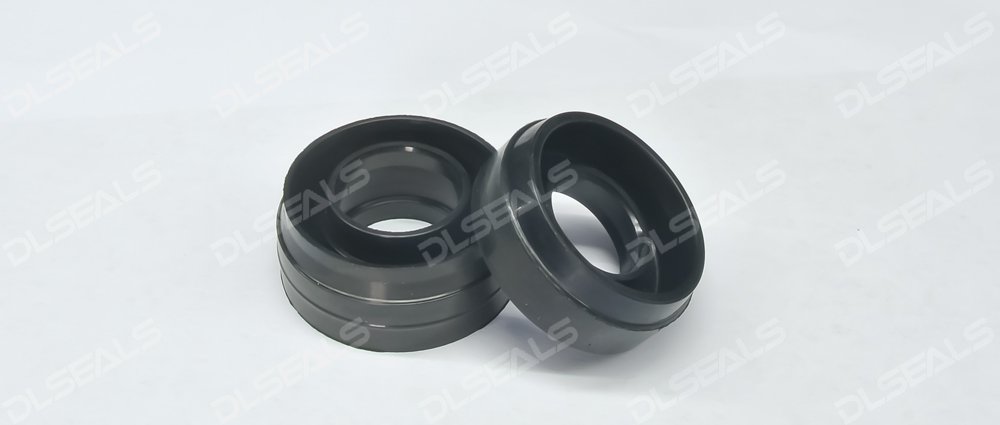
In the automotive industry, seal material selection is critical to vehicle performance and durability. Nitrile rubber and fluoroelastomer are two commonly used rubber materials, each with unique performance and application advantages. This article will compare the performance of nitrile rubber and fluoroelastomer and discuss their unique advantages in the automotive industry.
Performance characteristics of nitrile rubber (NBR)
1. Excellent oil resistance
Nitrile rubber is known for its excellent oil resistance, which makes it widely used in the automotive industry for components such as oil seals, fuel systems, and hydraulic systems. Nitrile rubber can effectively resist the erosion of various oils and fuels, ensuring the normal operation of vehicles in harsh environments.
2. Good wear resistance
Nitrile rubber has good abrasion resistance, which makes it excellent in applications where it needs to withstand wear and tear. For example, nitrile rubber is often used to make seals and gaskets in automobile engines, which can effectively reduce wear and leakage.
3. Moderate temperature range
The operating temperature range of nitrile rubber is typically between -30°C and +100°C. Although its high temperature resistance is not as good as that of fluoroelastomer, it is sufficient for most automotive applications.
4. Cost-effectiveness
Nitrile rubber is relatively low-cost to produce, making it an economical and practical choice in the automotive industry where large quantities of rubber materials are used.
Performance characteristics of fluorine rubber (FKM)
1. Excellent high temperature resistance
Fluorine rubber has excellent high temperature resistance and can work stably in the temperature range of -20°C to +250°C. This property makes fluoroelastomers ideal for use in high-temperature environments, such as in automotive engine seals and high-temperature oil seals.
2. Excellent chemical resistance
Fluorine rubber has excellent chemical resistance and can resist the erosion of various strong acids, alkalis and solvents. This makes it important in automotive parts that handle chemicals, such as brake fluid systems and fuel systems.
3. Low gas permeability
One of the great advantages of fluoroelastomer is its low gas permeability, which can effectively prevent gas leakage. This characteristic makes fluorine rubber widely used in automobile braking systems and air conditioning systems to ensure system stability and safety.
4. High cost
Viton is more expensive to produce, but due to its superior properties, it is often used in applications with extremely high performance requirements.
The unique advantages of nitrile rubber and fluororubber in the automotive industry
1. Balance between cost and performance
Nitrile rubber, with its lower cost and good oil resistance and wear resistance, is suitable for automotive parts that require economy and durability. It is ideal for seals, gaskets and oil seals commonly found in automotive manufacturing.
Fluorine rubber, with its excellent high temperature resistance and chemical resistance, is suitable for use in automotive parts with extremely high performance requirements, such as high temperature oil seals and chemical contact parts. Although the cost is higher, the long-term stability and reliability it provides make it worth the investment.
2. Differences in application fields
In automobile engines and fuel systems, nitrile rubber is widely used in oil seals, gaskets and seals due to its good oil resistance and economy. Fluorine rubber is more suitable for use in environments with high temperatures and high chemical corrosion, such as key components of braking systems and air conditioning systems.
3. Maintenance and replacement cycle
Due to the economy and good wear resistance of nitrile rubber, vehicle repairs and replacements are less frequent, reducing maintenance costs. The durability and high performance of fluororubber reduce the frequent replacement of high-performance parts and improve the stability and safety of the overall vehicle.
in conclusion
Nitrile rubber and fluoroelastomer each have their own characteristics and play an important role in the automotive industry. Nitrile rubber is widely used in various automotive parts due to its economy and good oil resistance and wear resistance, while fluorine rubber performs well in high-performance and demanding applications due to its excellent high temperature resistance and chemical resistance. outstanding. Understanding the performance characteristics and application advantages of these two rubbers will help make more appropriate material choices in vehicle design and repair, thereby improving the overall performance and reliability of the vehicle.
Post time: Aug-20-2024
